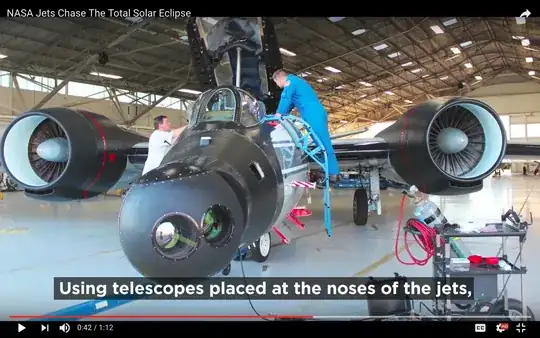Would it be possible to mount a telescope on a high quality drone and fly above the light pollution to get better star shots (if the wind allows it of course)?
-
2Different, and in Space Exploration SE, but related: Would it have been cheaper and/or faster to put a James Webb-like Space Telescope on a balloon instead of a rocket? For the required altitude, see How high does light pollution reach into the sky? and in Earth Science SE Why (actually) is the night sky so bright in the city? How far up is that happening? – uhoh May 16 '21 at 02:23
-
1In some jurisdictions it is strictly illegal to fly drones at night (with hefty penalties if caught). – Evariste May 17 '21 at 10:57
3 Answers
Yes, but not in the exact way you think of.
To avoid light pollution it is better to go sideways. If you are in a light-polluted city, there would still be light pollution at an altitude of 400ft (the maximum operating altitude of drones) And, moreover, amateur drones are not powerful enough to carry a telescope of any useful size. So you will find that driving a few miles out of town will be much more effective, and much cheaper.
On the other hand, water vapour in the atmosphere absorbs infra-red light. If you can take a "drone" up to 40000 ft, you would have a good location for infra-red astronomy. You would just need a big "drone". . . A 747 would be big enough. SOFIA is just that: a telescope mounted on a jumbo jet to get above the water vapour in the lower atmosphere.
So, it's not practical to use an amateur drone to get above light pollution. It is practical to put a telescope on a plane but only for quite specialist observations.
- 120,702
- 5
- 298
- 423
-
3400 feet is the maximum altitude for drones?! Mavic Mini can fly at 3 km above sea level (specs), more powerful drones may be able to fly even higher. The optical payload is another question, of course: amateur drones aren't designed for such heavy palyoads. – Ruslan May 16 '21 at 20:45
-
13
-
Hovering with a 747 is not quite possible yet :-) - some airplanes can do that though, see Cobra maneuver. – B--rian May 16 '21 at 21:27
-
4You don't really need to hover in order to operate a telescope for observing astronomical objects, a directional stability is enough. You may as well find it beneficial to fly in certain direction (e.g. west) so you have longer night. – fraxinus May 16 '21 at 21:35
-
4
-1for a sweeping generalization leading to a misleading if not incorrect answer. See for example answers to How unusual is it for remotely piloted aircraft fly through commercial or general aviation airspace? and What is this NASA UAV, and what is its function? OP said "high quality drone" and you replaced it with "amateur toy quadcopter" because it was easier to answer that question than to take the OP's actual question seriously. – uhoh May 17 '21 at 00:07 -
8@uhoh: James K did address putting a telescope on a plane. Most people's idea of "high-quality drone" is not a hundred-million-dollar repurposed military surveillance aircraft like that Global Hawk you linked. People who can afford that have much better options for avoiding light pollution anyway. – user2357112 May 17 '21 at 13:37
-
1@user2357112supportsMonica and if one checks, one sees that I didn't say otherwise! The question asks if it would work but the question does not ask about practicality. "Would it be possible...?" is simply that. If the question is "What is the capital of Assyria?" and one answers "Once you allow division by zero, all of your following results are suspect", it will get plenty of votes because people know that hidden divide-by-zeros is a common issue, and they will forget all about the question being about the capital of Assyria. – uhoh May 17 '21 at 15:18
-
@user2357112supportsMonica Some folks use questions as opportunities to write the answers they'd like to write, others see them as opportunities to answer the question as asked, and most folks are somewhere in the middle which is probably the right place to be if one has to be in one place. But in this case OP specified "high quality drone" and answering as if they hadn't said that is suboptimal. – uhoh May 17 '21 at 15:21
-
2@uhoh Of course "drone" can mean any remotely piloted aircraft. It is probably possible to fly a 747 as a drone. However I understand "high quality drone" as something like a DJI Matrice 210 RTK (retails for £10000) However these are still subject to regulations and a a 400ft ceiling, even if they can go higher. I've addressed "would it work" taking into account the aim to get better star shots. My conclusion is "no, it would not" because "for the same mone/effort put into going sideways you can get much better results". But mentioned when getting on a plane is useful. Good answer. – James K May 17 '21 at 16:37
-
1In Aviation SE the OP can ask "Would it be legal..." but here they've only asked in toto "Would it be possible to mount a telescope on a high quality drone and fly above the light pollution to get better star shots (if the wind allows it of course)?" and nobody has asked the OP for any clarification. NASA's Ikhana (see here and here from here) flew to 20,000 feet. – uhoh May 17 '21 at 20:05
-
NASA also flies a Northrop Grumman RQ-4 Global Hawk The'd have to use a turret like NASA did here or similar if the telescope were long, but something like the Dragonfly (see here and references therein) which would really benefit from low sky brightness at 20,000 feet) would fit in a turret quite nicely! I find your quadcopter and 400 foot limit answer dismissive of reality and an incorrect answer. This is Stack Exchange, folks disagree sometimes. – uhoh May 17 '21 at 20:12
-
2I've gone ahead and posted some of this as a new answer, thanks for the stimulating engagement! – uhoh May 17 '21 at 20:32
"Above the light pollution" is really high and the stratosphere is a good starting point, because most of the atmospheric light scattering happens in the troposphere. Quite a few technical and regulatory obstacles here.
On the other hand, directional instability (down to motor vibration) and astrophotography don't really play well. You need to maintain the direction of the optical system stable down to its angular resolution for the time of exposition. How about few micro-arc-seconds for like 15 minutes?
On a big, heavy airplane one can probably use some variation of adaptive optics in addition to a really good pilot. Of course, this will make the telescope more complex and heavier, likely doubling the mass. Assuming you start with 20-40cm telescope, this puts quite a requirements on the drone specs.
Space telescopes carry quite a deal of engineering effort in regard to vibrational control.
- 2,839
- 8
- 13
-
1regulator addressed in How unusual is it for remotely piloted aircraft fly through commercial or general aviation airspace? and obliquely in What is this NASA UAV, and what is its function? As far as astronomy from planes than SOFIA, see answer(s) to Why the thermal imaging of Mercury's surface requires a telescope on a jet flying through an eclipse? – uhoh May 17 '21 at 00:09
-
1
I won't discuss the utility of doing this or if there are better ways to make observations with dark skies, but to your question, as asked,
Would it be possible to mount a telescope on a high quality drone and fly above the light pollution to get better star shots (if the wind allows it of course)?
the answer is
Yes, certainly!
and don't let folks tell you otherwise!
The Dragonfly is a beautiful instrument that is suited to image very low surface brightness objects because it uses specially coated lenses instead of mirrors with their surface roughness, and has no central obstructions and vanes which diffract light. It would benefit particularly from being above light pollution.
You can (and should probably) just put it on a mountain or on a balloon like the ASTHROS telescope as discussed in
- Would it have been cheaper and/or faster to put a James Webb-like Space Telescope on a balloon instead of a rocket? (no, ASTHROS is fine but JWST is better in space; different wavlength ranges, sizes, etc.)
but you could put a telescope on a high quality drone, and that's all you asked!
click for larger
NASA has several drones that fly quite high. Their Ikhana, see
- NASA flies large unmanned aircraft in public airspace without chase plane for first time from 2018
- NASA Armstrong Fact Sheet: Unmanned Aircraft Systems Integration in the National Airspace System
- How unusual is it for remotely piloted aircraft fly through commercial or general aviation airspace?
- What is this NASA UAV, and what is its function?
flies to 20,000 feet in commercial airspace.
click for larger
For telescopic observations from smallish NASA aircraft (i.e. not something big like SOFIA) they use a turret. See
- 31,151
- 9
- 89
- 293
-
1Maybe I should ask it as a separate question: Do you know more about the NASA’s WB-57F Jets and their role for astronomy? The telescopes at the nose of the jets is a very curious thing I have not heard about... Thanks for the hint! – B--rian May 18 '21 at 22:40
-
That's a great question! I don't know anything about this aircraft nor am I 100% sure it belongs to NASA. It's not every day that there's a solar eclipse of course, the infrared imaging system in it must have a "day job" as well. I don't know if there is also a visible light imaging system in it as well.Perhaps it's was a prototype for FLIR development and bought used? Please ask! Aviation SE is helpful identifying specific aircraft and the Space SE community is great at tracking down sources on all things related to NASA. – uhoh May 18 '21 at 23:28
-
Aviation: What is this NASA UAV, and what is its function? and How did NASA Langley end up with the first 737? and Space: Why the thermal imaging of Mercury's surface requires a telescope on a jet flying through an eclipse? and What are the “NASA research assets” at Thule that were not recently destroyed by a meteor? etc. – uhoh May 18 '21 at 23:34
-
and How did the X-15 control attitude above the Kármán line?. But of course questions purely about astronomy (e.g. "What observational astronomy was done with this airplane besides taking the temperature of Mercury?") You'll have to explain that in the infrared SOFIA can do better and this one was used in this case only because SOFIA looks to the side, not up. More history about NASA astronomy from air planes in this excellent answer. – uhoh May 18 '21 at 23:38




